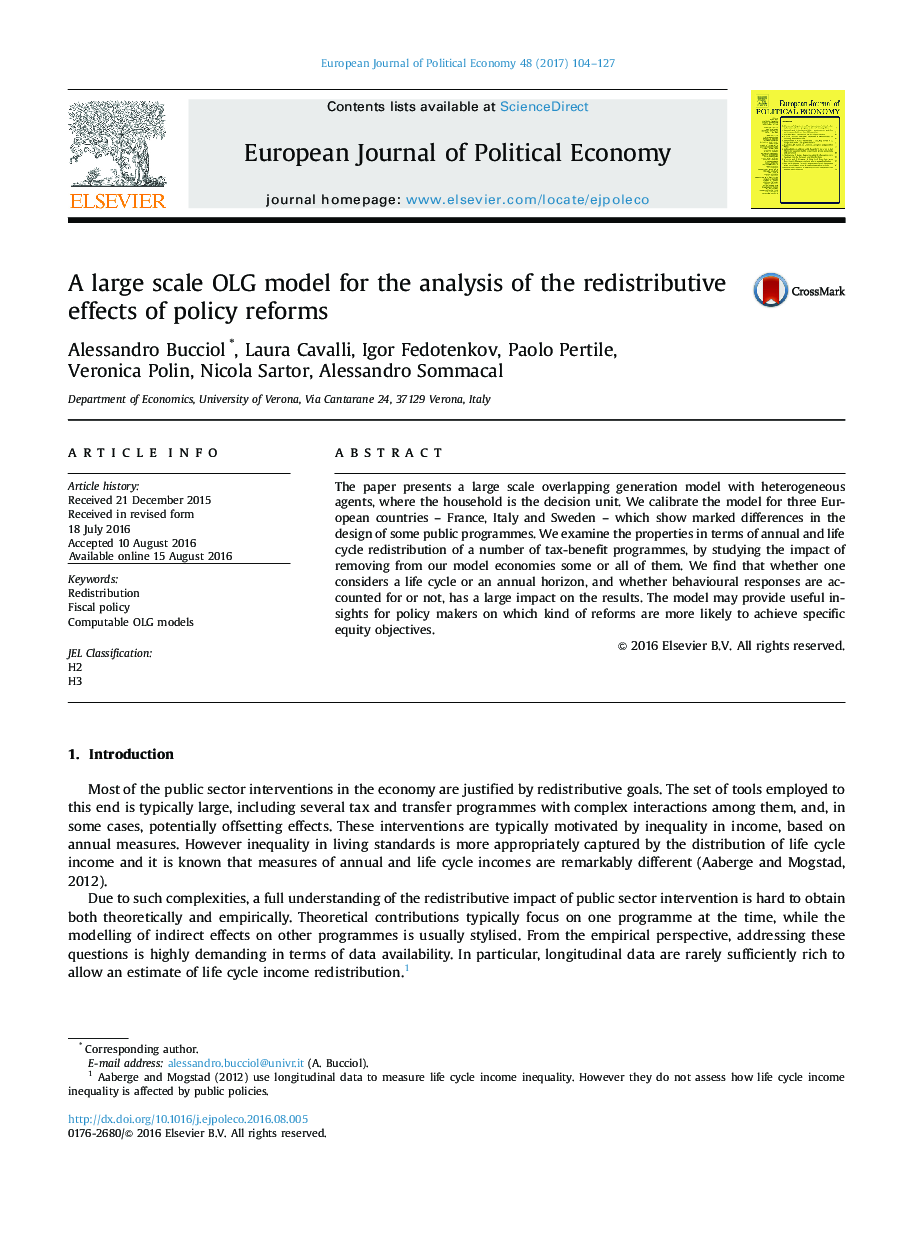| کد مقاله | کد نشریه | سال انتشار | مقاله انگلیسی | نسخه تمام متن |
|---|---|---|---|---|
| 5067778 | 1476876 | 2017 | 24 صفحه PDF | دانلود رایگان |

- We calibrate an OLG model with heterogeneous agents for France, Italy and Sweden.
- We include the main tax and benefit programmes to study income redistribution.
- Life cycle redistribution is always substantially lower than annual redistribution.
- Annual (life cycle) redistribution is the highest in Sweden (Italy).
- France redistributes less, mainly due to lower revenue from personal income tax.
The paper presents a large scale overlapping generation model with heterogeneous agents, where the household is the decision unit. We calibrate the model for three European countries - France, Italy and Sweden - which show marked differences in the design of some public programmes. We examine the properties in terms of annual and life cycle redistribution of a number of tax-benefit programmes, by studying the impact of removing from our model economies some or all of them. We find that whether one considers a life cycle or an annual horizon, and whether behavioural responses are accounted for or not, has a large impact on the results. The model may provide useful insights for policy makers on which kind of reforms are more likely to achieve specific equity objectives.
Journal: European Journal of Political Economy - Volume 48, June 2017, Pages 104-127